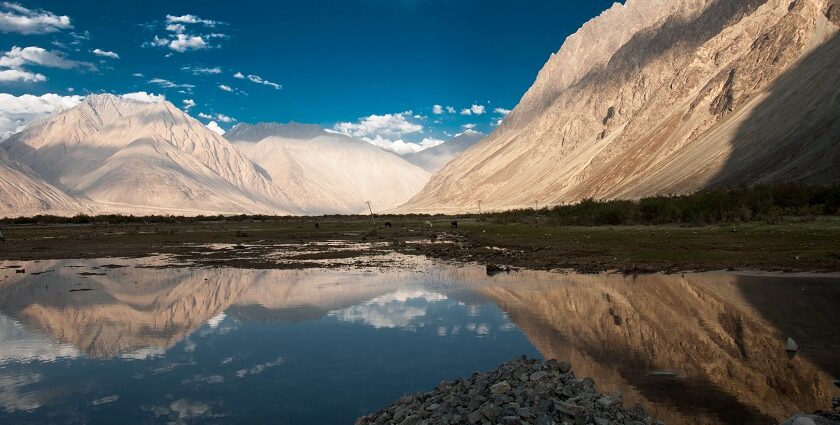Nubra Valley, nestled in Ladakh, India, is a breathtaking high-altitude desert at around 10,000 feet. It is known for its dramatic landscapes and offers a striking contrast of golden sand dunes, verdant villages, and the confluence of the Shyok and Nubra rivers. Key places to visit in Nubra include Hunder’s sand dunes, where Bactrian camels roam, and the iconic Diskit Monastery, famed for its towering Maitreya Buddha statue. The valley is accessible via the Khardung La Pass, one of the world’s highest motorable roads. Therefore Nubra Valley captivates visitors with its serene beauty and unique cultural heritage.
Top 10 Places To Visit In Nubra Valley
Nubra Valley offers a perfect amalgamation of aesthetically pleasing landscapes and peaceful religious escapades for travellers. Here is a quick look into a few must-visit places in Nubra Valley for further convenience.
1. Hunder Sand Dunes
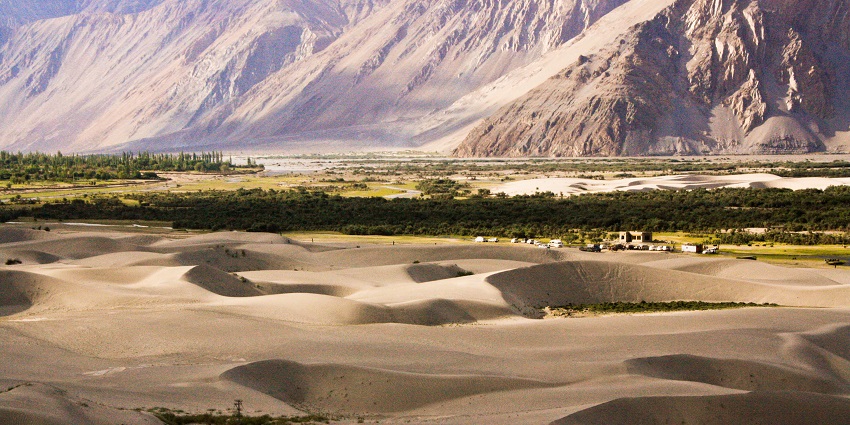
Photo: sushmita balasubramani / Wikimedia Commons
Hunder’s high-altitude desert landscape is famous for its striking white sand dunes. The area is home to rare Bactrian camels, which were once part of the ancient Silk Route caravans. Visitors can enjoy camel safaris against the backdrop of the Karakoram mountains and Shyok River. The dunes are a surreal contrast to the lush green surroundings of the Nubra Valley, offering a truly unique experience of a desert in the Himalayas.
Best Time To Visit: June to September
Distance From The Valley Centre: approximately 7 to 10 kilometres
Suggested Read: Hot Springs In Ladakh
2. Diskit Monastery
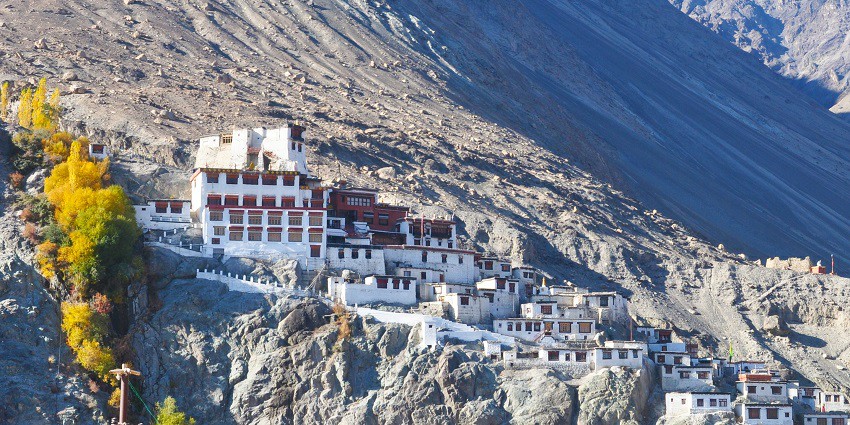
Photo: Prof Ranga Sai / Wikimedia Commons
Diskit Monastery is the largest and oldest monastery in Nubra Valley, founded in the 14th century. Located on a hill overlooking the Diskit village, it houses a 32-meter-high statue of Maitreya Buddha, symbolizing peace. The monastery offers panoramic views of the Nubra Valley and surrounding mountains. It also serves as a spiritual centre for the locals, where annual festivals are held. The monastery’s intricate architecture and Buddhist artefacts attract visitors seeking both cultural insight and tranquil vistas.
Best Time To Visit: July – October
Distance From The Valley: approximately 12 kilometres
3. Panamik Hot Springs
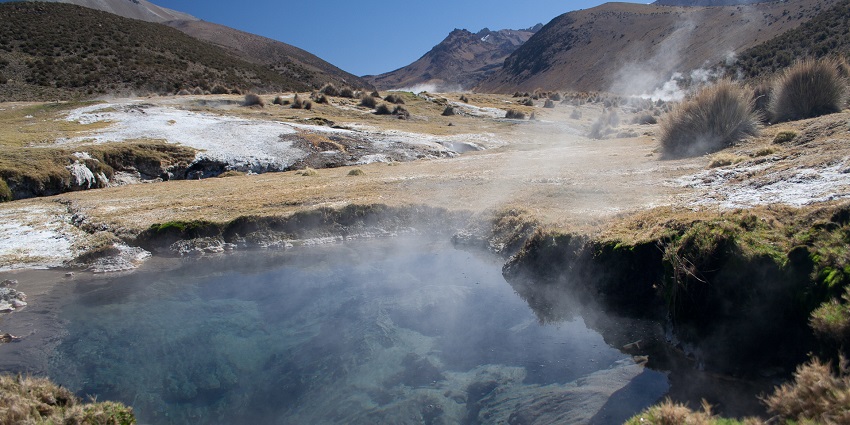
Photo: Cody H / Wikimedia Commons / Image For Representation Only
Panamik Hot Springs, located in the northern part of Nubra Valley, are famous for their therapeutic properties. Rich in sulfur, the hot waters are believed to have healing qualities, attracting visitors seeking relief from ailments. The scenic village of Panamik is surrounded by the lush greenery of the Nubra River and the towering snow-capped peaks of the Himalayas. It serves as the last settlement accessible to tourists, offering an offbeat experience amidst breathtaking natural beauty and peaceful surroundings.
Best Time To Visit: June to September
Distance From The Valley Centre: approximately 30 kilometres
Suggested Read: Puga Valley In Ladakh
4. Khardung La Pass
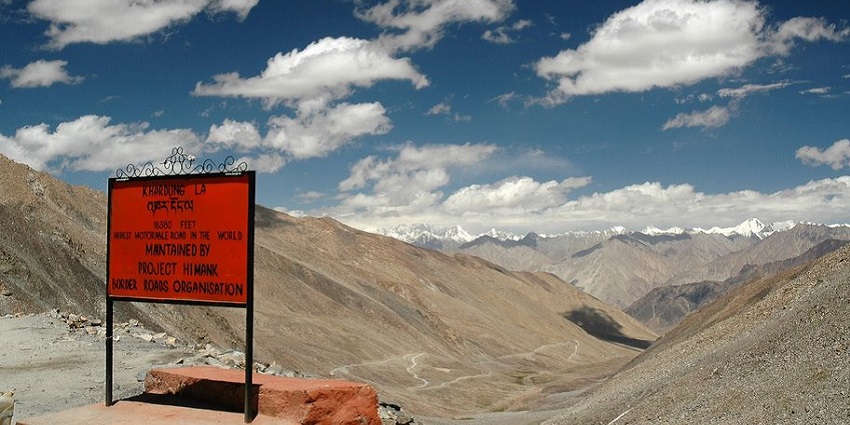
Photo: Tomáš Nečas / Wikimedia Commons
Khardung La, at an elevation of 18,380 feet, is one of the highest motorable passes in the world. It serves as the gateway to Nubra Valley from Leh. The journey offers stunning views of the Ladakh Range and the surrounding glaciers. The pass holds historical significance as it was once part of the ancient Silk Route. Despite its challenging terrain, Khardung La draws adventure seekers for the thrill of driving or biking through high-altitude conditions and experiencing spectacular vistas.
Best Time To Visit: May to October.
Distance From Valley Centre: approximately 40 kilometres
5. Sumur Village
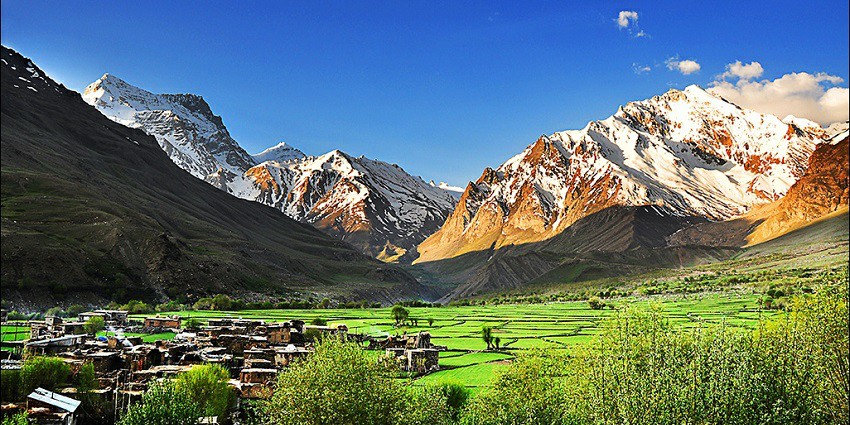
Photo: Narender9 / Wikimedia Commons / Image For Representation Only
Sumur Village, a peaceful hamlet in Nubra Valley, is renowned for its pristine beauty and rich cultural heritage. The village is home to the Samstanling Monastery, a key spiritual centre in the region. Surrounded by orchards, farmlands, and the Nubra River, Sumur offers a glimpse into the traditional Ladakhi way of life. It’s an ideal spot for those looking to relax and explore the valley’s natural landscapes, with its quiet trails and panoramic views of the surrounding mountains.
Best Time To Visit: February to June
Distance From Valley Centre: approximately 40 kilometres
Suggested Read: Enhance Your Vacation With These Things To Do In Ladakh
6. Yarab Tso Lake
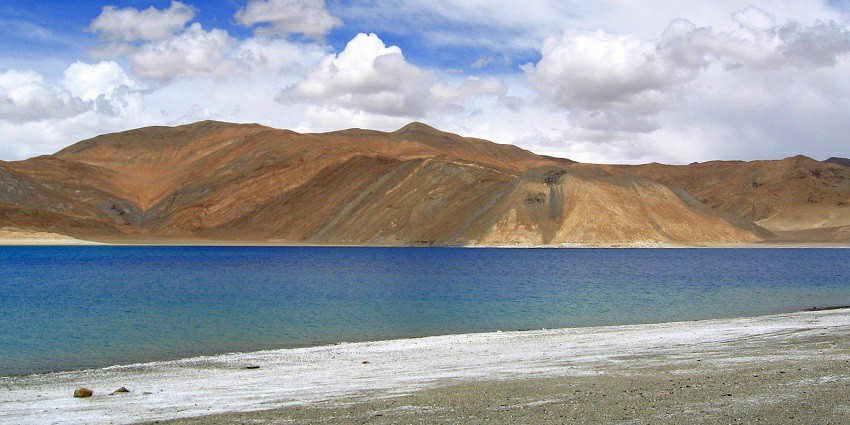
Photo: Hansraj / Wikimedia Commons / Image For Representation Only
Yarab Tso, often referred to as the “Hidden Lake,” is located near the village of Panamik. Sacred to the locals, this serene and pristine lake is tucked away in the mountains, accessible via a short trek. Its crystal-clear waters reflect the surrounding rugged peaks, creating a magical and tranquil atmosphere. Yarab Tso is considered one of the holiest places in Nubra Valley, and visitors often come here for meditation, peace, and a deeper connection with nature.
Best Time To Visit: June to September
Distance From Valley Centre: approximately 30 kilometres
7. Turtuk Village
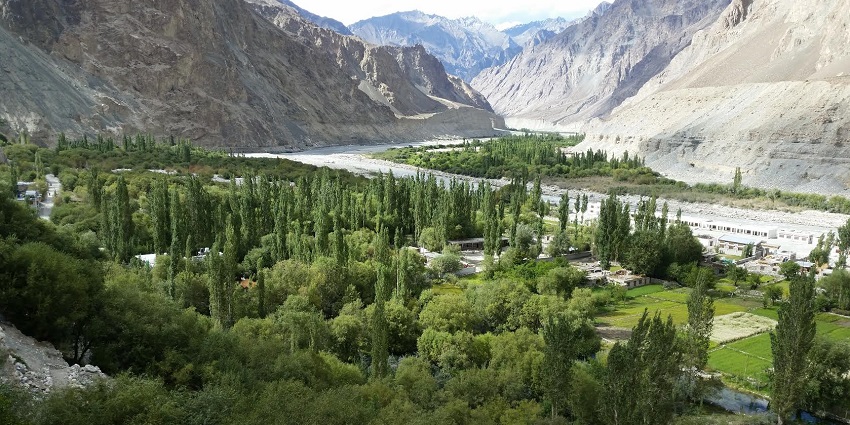
Photo: Ambroix / Wikimedia Commons
Turtuk, one of the northernmost villages in India, lies close to the Indo-Pakistan border. It is part of the Balti region, known for its unique culture, language, and history. Turtuk was opened to tourists in 2010, offering a rare glimpse into a community with a rich blend of Ladakhi and Balti traditions. The village is surrounded by apricot orchards and lush greenery, with views of the Shyok River. Turtuk is a culturally immersive destination, ideal for those interested in history and remote village life.
Best Time To Visit: May and September
Distance From The Valley: approximately 85 kilometres
Suggested Read: Best Food In Leh
8. Maitreya Buddha Statue
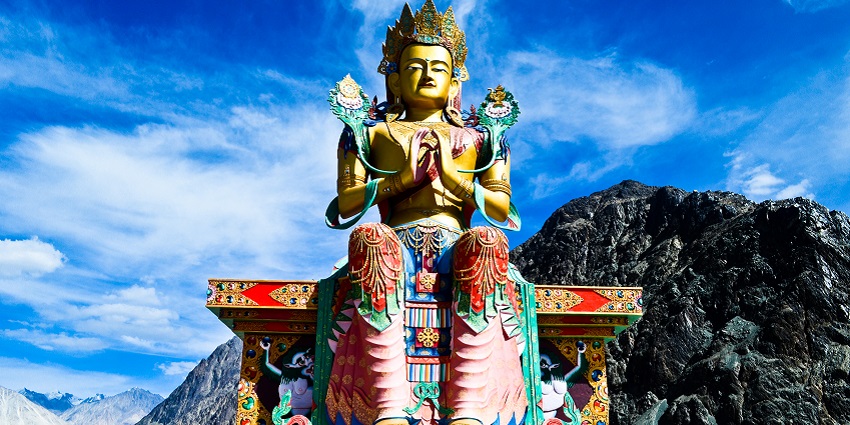
Photo: Atishayphotography / Wikimedia Commons
The towering Maitreya Buddha statue, located at Diskit Monastery, is a 32-meter-high icon that overlooks the Nubra Valley. Built in 2010, the statue represents the future Buddha and is a symbol of peace and protection for the region. Its colorful design and massive scale make it a striking landmark, visible from afar. Visitors can enjoy sweeping views of the valley and surrounding mountains from the monastery complex. The statue, with its peaceful presence, draws tourists and pilgrims alike.
Things To Do: Popular spot for photography, especially during sunrise and sunset.
Distance From Valley Centre: approximately 12 kilometres
9. Ensa Gompa
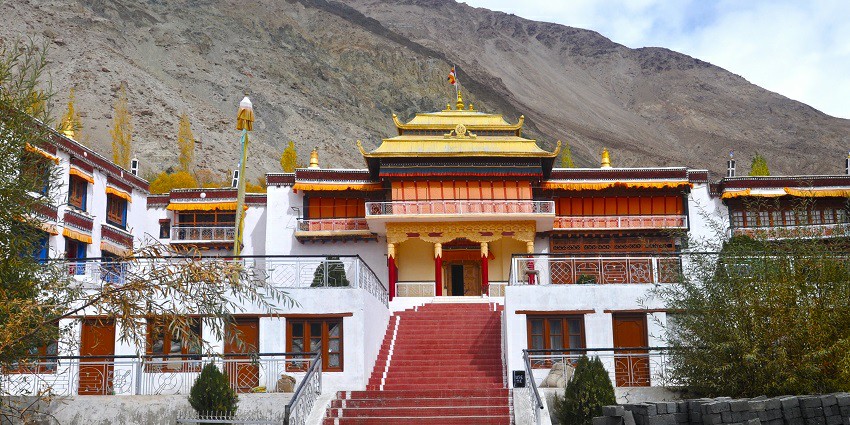
Photo: Prof Ranga Sai / Wikimedia Commons / Image For Representation Only
Ensa Gompa is an ancient Buddhist monastery perched atop a hill near Panamik village. This lesser-known monastery offers a tranquil retreat with panoramic views of the Nubra River and surrounding mountains. Ensa is famous for its ancient murals and spiritual significance. It’s a peaceful place for meditation, often visited by those seeking solitude and a deeper connection to Buddhism. The hike to the monastery through picturesque trails adds to the charm of this remote religious site.
Accessibility: The monastery is accessible via a short trek from Panamik
Distance From Valley Centre: approximately 25 kilometres
Suggested Read: Things To Do In Leh To Seek Adventure And Beauty Amidst The Mountains
10. Shyok River
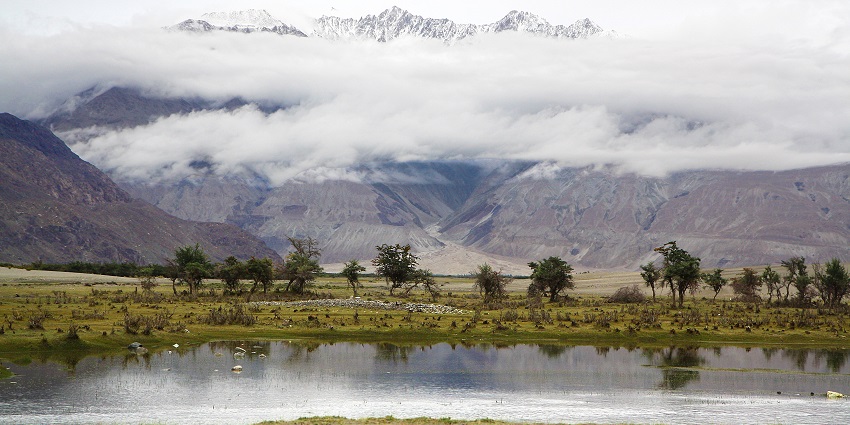
Photo: Rupak Sarkar / Wikimedia Commons / Image For Representation Only
The Shyok River, a tributary of the Indus, flows through Nubra Valley and adds to the region’s dramatic landscapes. Popularly known as the “River of Death” due to its unpredictable nature, the Shyok is a lifeline for the valley’s agriculture and villages. The river’s winding course creates stunning views, particularly where it meets the Nubra River. Its calm stretches are ideal for riverside walks, photography, and experiencing the raw beauty of the valley, where lush green fields meet barren, towering mountains.
Things To Do: Adventure Activities, the Shyok River.
Distance From Valley Centre: approximately 10 to 15 kilometres
Nubra Valley, a breathtaking gem in Ladakh, offers a myriad of captivating destinations for travellers. Be it exploring the Hunder Sand Dunes, where unique Bactrian camels roam or visiting the Maitreya Buddha Statue at Diskit Monastery, a symbol of peace and spirituality. One can also, experience the natural hot springs at Panamik, renowned for their therapeutic properties and to top it all a trek to the serene Yarab Tso Lake is ideal. Book a trip with TripXL right away in order to explore this majestic landscape.
Cover Photo: vaidyanathan / Wikimedia Commons


 WhatsApp
WhatsApp
 Twitter
Twitter
